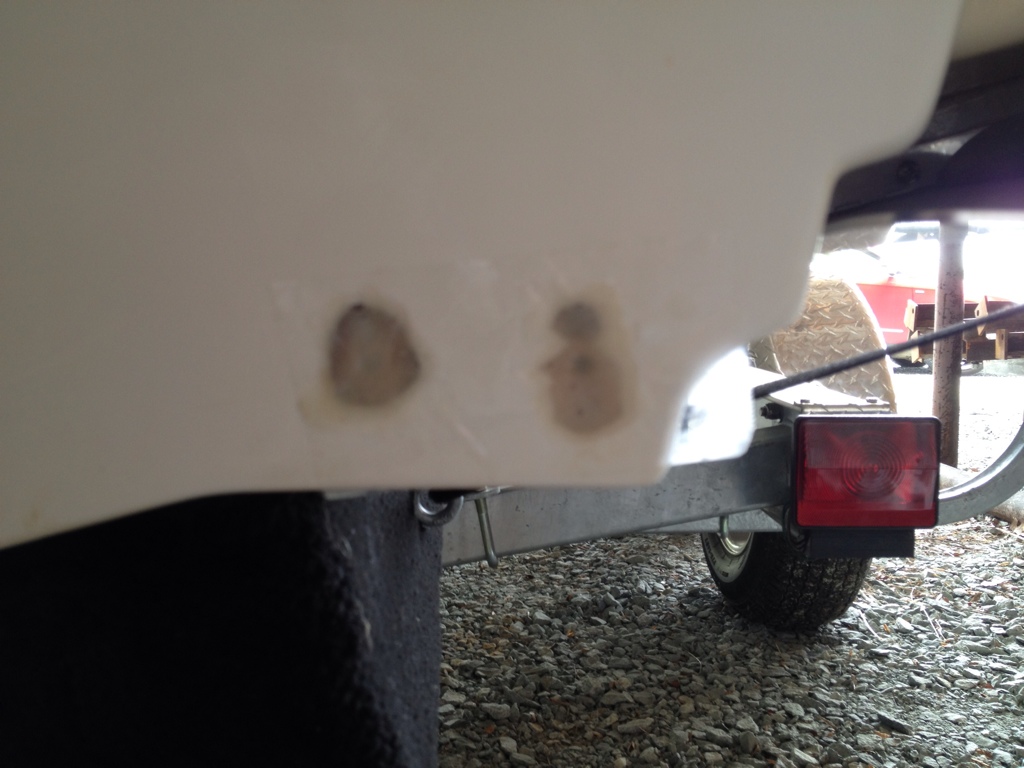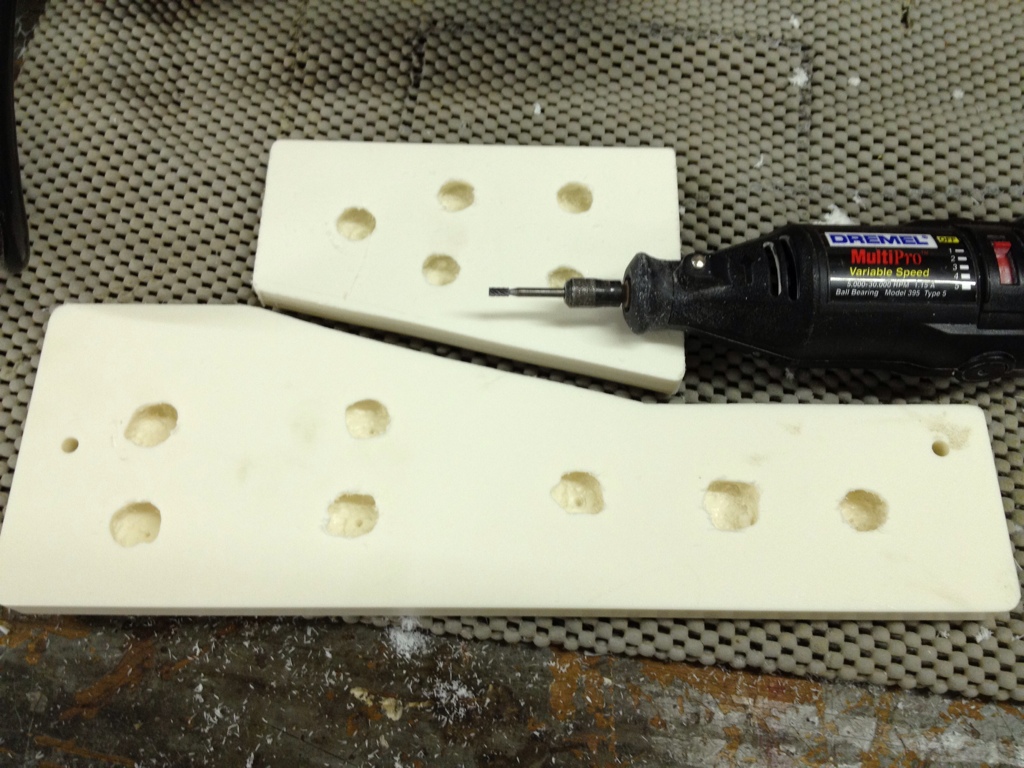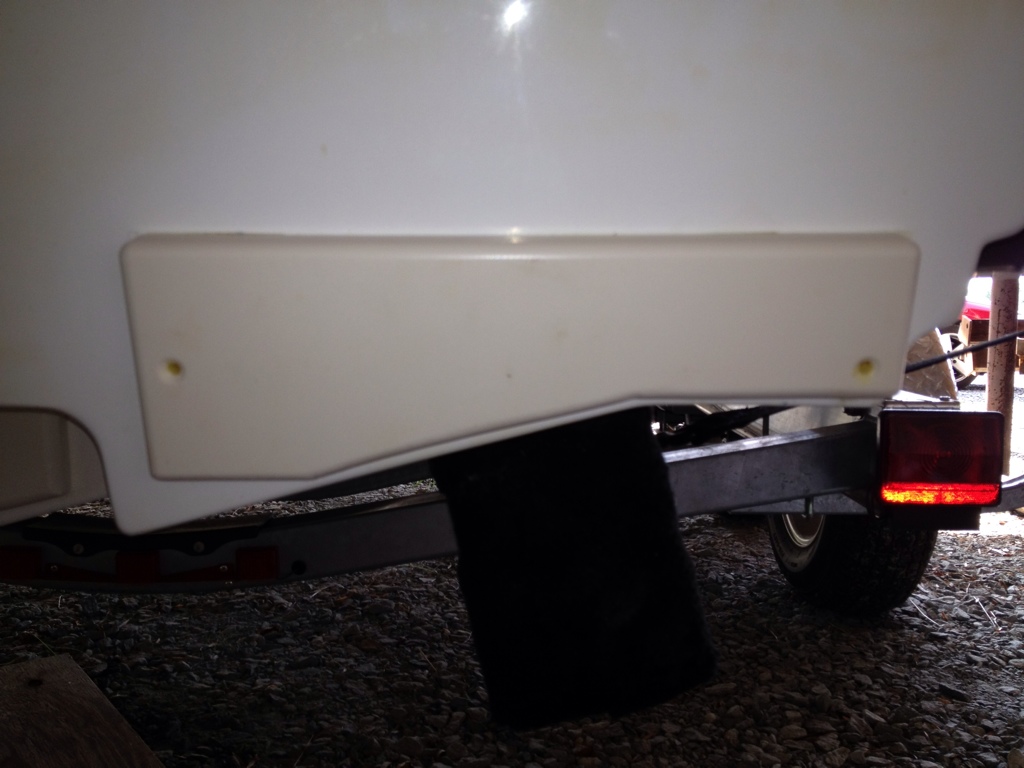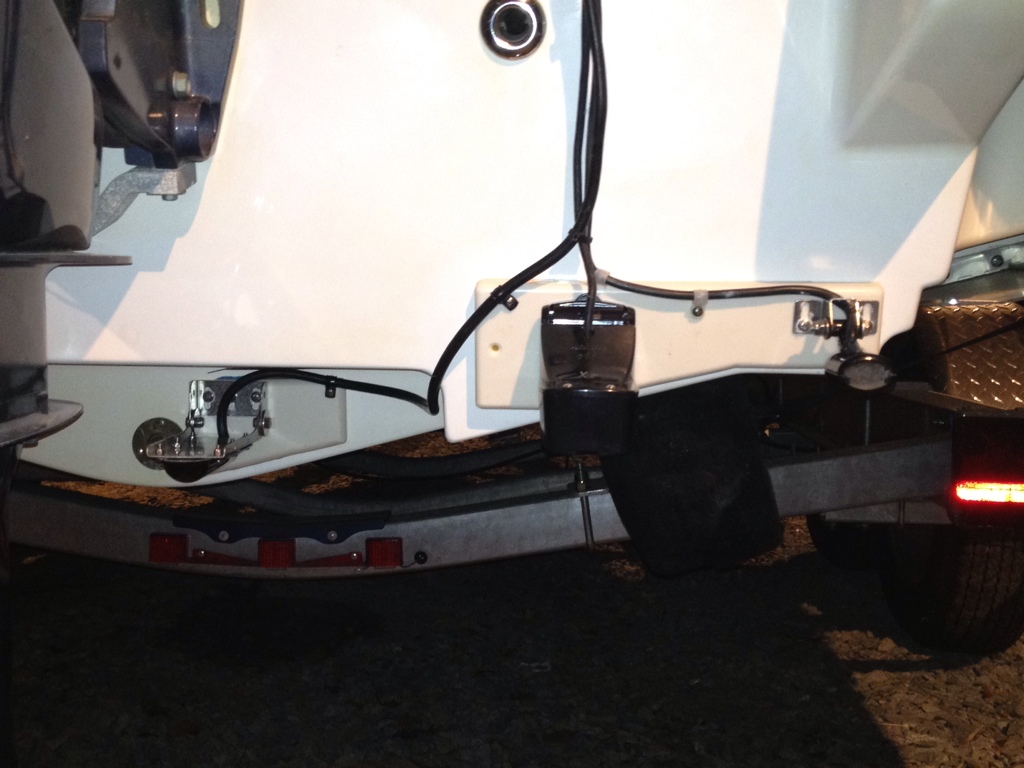transducer. Often times one has to try several changes (slight) in the mounting position / location in order to get a solid reading when the boat is on plane or at speed. However, making these adjustments, especially when having to do so side-to-side, results in undesired sets of holes in your transom. Even when care is taken to seal these holes, they are opportunities for water to begin to find its way into your transom causing damage down the road.
One way to avoid this issue is to install a transducer mounting plate that you mount to your boat and then you have a surface to mount your transducer to, and if you need to make adjustments you are putting new holes in this mounting plate and not your transom. Starboard or similar HDPE (High Density Polyethylene) materials are popular materials used for marine applications as they will not rot, delaminate or break down in water over time. However, the downside of Starboard or other HDPE materials is that they can be very difficult to bond as very few adhesives will form a bond to the material. Certainly you could screw a block of Starboard to your hull, but you are putting a set of holes in the boat which is what we are trying to avoid, and if those holes are not properly prepared and sealed you can let water in through those. What is needed is a method to secure HDPE-based materials to your hull without the use of screws or other fasteners.
(Click "Read More" to the right for more of this article)
Materials needed:
|
|
| 1. Before starting, if you have previously mounted a transducer you may wish to seal these holes. If you had used 3M 5200 or similar sealant, it is recommended to over drill these holes to remove any of the old sealant and then fill the hole with thickened epoxy. You can use the G-flex epoxy listed above for this use or some other epoxy material such as MarineTex, as these holes will be “top-coated” when we complete our installation. |
such that you have the ability to make adjustments vertically and horizontally with your transducer.
3. Drill 4 - 8 evenly spaced holes in the back of your Starboard plate making sure not to drill all the way through - leave approximately 1/8” - 1/4” of material (so if you are using a 3/4” thick block of Starboard, drill 1/2” or 5/8” deep into the back of the block) - make sure to take into account any “point” the dril l might have that may penetrate deeper than the rest of the drill bit.
6. Using the propane torch, flame-treat the rear surface of the mounting plate. This is done by passing the tip of the flame from the torch just above the surface of the material at a rate of around 2”-3” per second, overlapping the previous pass slightly. If done properly you wil l not see any visible difference (no browning, melting, etc), but the heat creates a chemical property change in the material that aids in the bonding. Make sure you complete the next steps within 30 minutes of the flame treatment.
7. Use the clean rag and the acetone or denatured alcohol to thoroughly clean the back of the mounting plate as well as the area of the transom where you will be mounting the plate.
8. Mix the G-flex epoxy per the manufacturer’s directions and then fill the holes in the back of the mounting
plate and if desired apply a thin coat of epoxy across the entire back surface of the plate.
If you want to take advantage of the mounting system above to avoid holes in your transom, but do not want to go to the trouble of making the mount yourself, you can purchase a commercially made unit. The Stern Saver (www.sternsaver.com) makes a mounting block ready for installation and includes the required amount of adhesive and instructions. There is also a product called “Stern Mate” (www.sternmate.com) which is similar in nature that you may want to explore.




 RSS Feed
RSS Feed